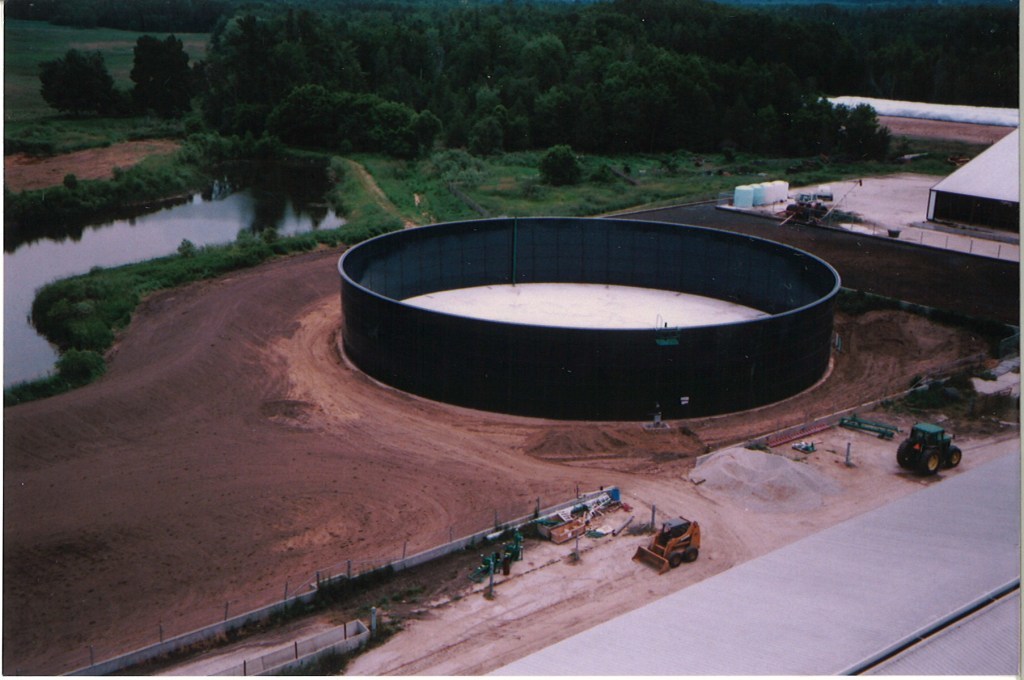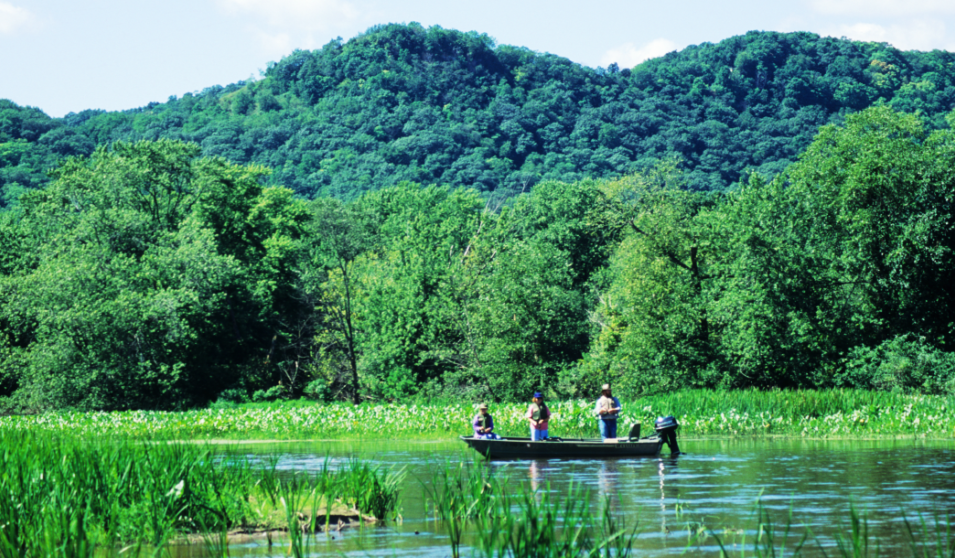Bass Lake, a small drainage lake in Marinette County, has a long history of water quality problems. It once supported a two-tier fishery (a hotspot for local fishermen), but the DNR stopped stocking trout in 1975 when oxygen levels dropped too low to support them.
Shortly after, the lake was added to the state’s impaired waters list. Bass Lake is surrounded largely by agricultural land, and water quality issues have been linked to animal waste runoff from unconfined manure stacks and feedlots. The DNR named Bass Lake a small-scale priority watershed in 1984 and started to think about solutions.
Thanks to the small size of the watershed, there were only two landowners the DNR needed to coordinate with. Local producers John Fendryk and John Charapata were determined to be part of the solution. They installed the practices recommended by the DNR and Marinette County Land and Water Conservation Department (LWCD), including clean water diversions, concrete feedlots with filter strips and manure storage facilities.
Unfortunately, those efforts were not successful. Water quality monitoring between revealed high phosphorus concentrations, and severe algae blooms and intermittent episodes of winter kill continued.
Marinette County LWCD continued to work with the landowners and applied for one of the first Targeted Runoff Management (TRM) Grants from the DNR. That funding allowed Charapata to abandon his farm and move all cattle off the site. Fendryk stopped using his concrete feedlot and built a permanent housing facility for animals. With help from the county, he built a manure storage facility and dredged nutrient-rich sediment from the spring pond, eliminating that as a phosphorus source. A wetland scrape and sediment control basin was also constructed, diverting general runoff from the pond.
The county continued monitoring Bass Lake’s phosphorus levels to assess whether they should perform an alum (aluminum sulfate) treatment. Even after best management practices have slowed or stopped external phosphorus loading, the internal phosphorus sink can continue to cause problems, according to the DNR. Under these circumstances, alum is often the best solution.
Data from water quality monitoring confirmed that upstream wetlands had become a source of phosphorus to the lake and the alum treatment was performed in November 1999. By the spring of 2000, hypolimnetic (lower level) phosphorus concentrations had gone down from 1,200 to 26 ug/l.
Continued water quality monitoring by Marinette County since the alum treatment proves that it was successful in mitigating internal phosphorus loading. As for external loading, the county has continued to work with Fendryk, now the only producer in the watershed, to implement conservation practices.
In 2000, they put up a slurry store waste management system to collect and eliminate all waste runoff from the site. Environmentally, this was the most important project they did with Fendryk, according Paul Klose, a conservation technician in Marinette County.

Fendryk started bagging his feed in another attempt to eliminate runoff, and in 2010, they built a feed storage pad with a leachate collection system. Most recently, the county designed an additional manure transfer system for him, which collects manure from the newest barn and pumps it to the pit.
Both Fendryk and Klose had a hard time recalling all of the many conservation practices installed throughout the last 20 years of their partnership. With Fendryk’s farm up to DNR’s performance standards and Bass Lake off the impaired waters list, it seems that their efforts have been worthwhile.
Anglers are fishing the lake again, and with a conservation easement protecting 2,000 feet of shoreline from development, this should be the case for years to come.
Feature photo via Wisconsin DNR.

